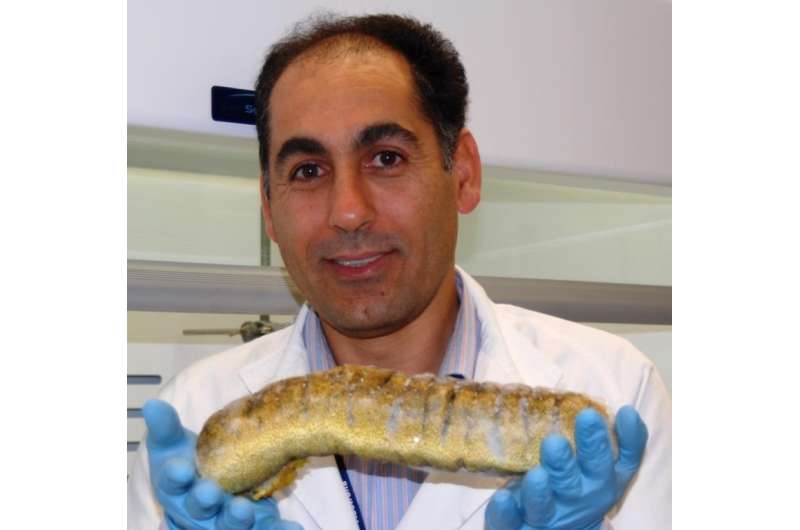Cracking the sea cucumber code

The export value of Australian Holothurians (better known as humble sea cucumbers) is rising after Flinders researchers start to unravel their nutritional and medicinal value.
Research by Flinders University has found that local species of Australian sea cucumber have special properties that may even make them candidates for anti-cancer treatments – and a slice of the multibillion-dollar Asian market.
Little understood by Australian consumers, sea cucumbers are highly prized in Asian countries, produced and harvested by the tonne as a popular dish and used extensively in traditional Chinese and other Asian folk medicine.
Researchers at Flinders' Centre for Marine Bioproducts Development have delivered promising results about the unique qualities of several tropical and temperate sea cucumbers from northern and southern Australia which could pave the way for export shipments and possible local farming of this high-value commodity.
"Australia's tropical sea cucumbers are being exported to Asia, and now we're discovering some superior qualities in our temperate species," says Professor Graham Mair, from Flinders' School of Biological Sciences, who also is President of the World Aquaculture Society.
"We know that the quality and sustainability of Australian seafood is highly prized in Chinese markets and we already export considerable quantities of our rock lobster and abalone, so why not sea cucumbers too?"
The bioactive compounds (saponins) of several local temperate Australian sea cucumber have been studied for the first time.
Senior researcher Mr Yadollah Bahrami says novel saponins have been identified at high levels in our local sea cucumbers, making them suitable for a range of applications, including for their anti-cancer and other properties in Asian medicines.
"Our study of new sea cucumber species also provides evidence they may have applications in nutraceuticals (healthy food supplements), cosmetics, agrochemicals or as research reagents," says Mr Bahrami.
"We expect that the results of this project will transform the value of (our) sea cucumbers into sources of high-value products, important to human health and industry."
Holothurians (sea cucumbers) are the most consumable and valuable echinoderms thanks to their food and medicinal applications.
These sedentary marine invertebrates are also commonly known as beche-de-mer, trepang or gamat. They vary in size, shape, colour and flavour.
"Sea cucumbers are prolific producers of a wide range of bioactive compounds with diverse functions and are potential sources of agricultural, nutraceutical, pharmaceutical and cosmeceutical products," says Mr Bahrami.
"In pharmacology, sea cucumber saponins are known to have a wide range of medicinal properties, from anti-cancer to cardiovascular, boost immune system, anti-inflammatory, gastric, anti-diabetics, cholesterol-lowering, high blood pressure, anti-dementia, anti-viral and anti-fungal treatments."
The PhD project, supervised by Professor Chris Franco and Professor Wei Zhang, has studied 16 of local sea cucumber species and discovered a diverse range of novel saponins.
"In fact, in each species we found more than 50 different saponin congeners in which around half of them were novel," Mr Bahrami says.
"This means there is potential for the development of many new future drugs from Australian sea cucumbers."
Provided by Flinders University


















